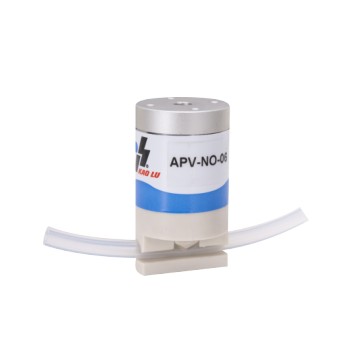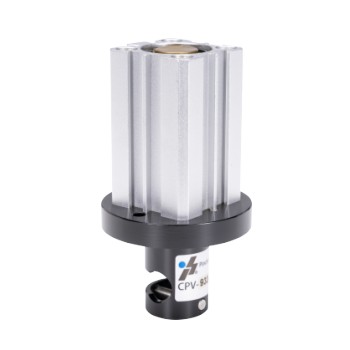Product Category Selection
Pinch Valve Applications
Solenoid pinch valves are used to open or close the flow path of the pinched silicon tube. The main body of a pinch valve is not in direct contact with the gas or the liquid, and only the inside of the tube will have direct contact with the liquid and gas fluid flowing through. Therefore, the pinch valve is not in direct contact with the fluid and is suitable for flow control devices on medical equipment, lab analyzers, food manufacturing equipment, and chemical manufacturing equipment.
What is a Pinch Valve?
A pinch valve is a type of valve that opens or closes a fluid path without having the valve body in contact with the flowing medium. As the name suggested the control of fluid path relies on the pinch force on the elastic tubing, such as silicon, PU or others. The main advantage of using a solenoid pinch valve over a gate valve or a piston valve is that the valve body does not have contact with aggressive flowing media, thus the life time, and in sanitary aspect, is much higher. Many types of pinch valve exist in the market, and in this article, we will be introducing three types of pinch valves that KaoLu offer, followed by the advantage and disadvantage of pinch valves, and conclude with what you should consider before making a decision on which pinch valve suits you the best.
What type of Pinch Valve does KaoLu offer?
KaoLu is one of the biggest pinch valve manufacturers and supplies three types of high-quality pinch valves that can be used for high-precision sterile flow control: proportional pinch valves, pneumatic cylinder pinch valves, and miniature solenoid pinch valves. KaoLu solenoid pinch valves have the advantages of strong clamping force, low power consumption, high stability, durability, precise flow control, and fast loading and unloading. Please click on suitable product below for further information.

APV Electronic Pinch Valve
APV pinch valve is a solenoid operated pinch vale. It is compatible with soft silicon tubing, with OD 6mm or 8 mm.
Available for normally closed or normally open version. It has fast response time and long life time.
APV pinch valve is compact in size, easy for installation, and it is widely used in dosing instrumentation.

CPV Cylinder Pinch Valve
CPV pneumatic pinch valve is an air actuated pinch valve. CPV is ideal to use with hard tubing or silicon-braided tubing.
There is selection of double acting or single acting operation. CPV pneumatic pinch valve can be used in many single-use applications. The pneumatic pinch valve is suitable for up to 1.5" OD tubing.

PPV Proportional Pinch Valve
PPV proportional pinch valve is used to proportionally control the inner diameter of plastic tube. It is used to modulate inner tube flow rate or pressure in a non-contact way.
Driven by a stepper motor, the repeatability and accuracy is high. Our expert control system allows user to easy install and dismount the tubing. The proportional valve is suitable with up to OD 1" tubing.
Product Description

Electronic Pinch Valve (APV Series)
It is a type of solenoid-operated pinch valve. Once the solenoid coil gets energized, the plunger will either get retracted (in a Normally Closed position) or attracted (in a Normally Opened position). With the electronic pinch valve, the plastic tube should have low durometer (such as soft silicon tubing), and the inner tube pressure should not exceed 30 psi. One advantage is that it is compact and low power consumption. 7.2W for our APV-08 version.

Pneumatic Pinch Valve
As the name suggests, the plunger that acts to either open or pinch (close) the flexible plastic tube is actuated by pneumatic pressure. The system should provide a pneumatic source in order to use this type of valve. No electric is required and we offer both N.O. or N.C version. The advantage is that it offers higher pinch force, thus the compatible tube can be higher durometer, such as silicon braided tube, or durometer up to 85 Shore A, or even high inner tube pressure.

Proportional Pinch Valve
A Proportional Pinch Valve utilized a linear stepper motor to position the plunger to an extent proportional to the amount of input electric signal. An external controller is required to provide electric signal to the stepper motor and thus actuates the movement. For example, with a 0-10V control signal, giving a 5V signal will position the plunger half-way in between the tube slot. The targeted position is extremely repeatable and precise due to the stepper motor characteristics. This type of valve is used to control the inline flow rate or regulate the inline pressure without getting in contact with the flow medium.
What are advantage and disadvantage of a Pinch Valve?
Advantages
- The media can be abrasive and corrosive
- No pressure drop due to straight flow path and no clogging by the media
- A straight flow path minimizes turbulence and friction
- Keeps media free from cross-contamination
- Easy replacement of the plastic tube
- Quick opening and closing time
- Low energy consumption
Disadvantages
- Due to elastomeric property of the plastic tube, the valve is not suitable for high temperature application.
- Difficult to know when the plastic tube will be torn apart by the plunger; however, depends on the frequency of usage, the plastic tube should be replaced frequently.
What should you consider when purchasing a Pinch Valve?
- Tube material, tube durometer, inner tube pressure
- ON/OFF or Proportional
- Control Control source
As a starting point, the tube characteristics are an important factor to consider when a pinch valve is suitable for you. Sometimes the durometer of the tube is just in between suitable or not, thus it is necessary to provide a sample for testing. An important fact to bear in mind is that the tube needs to be flexible, so that the tube could return to its original form when the plunger does not squeeze it, thus allowing fluid to pass through. Additionally, if the tube pressure is too high, this will have a similar effect as a hard tubing which may be difficult to "pinch".
Secondly, should you believe the tube is suitable, what type of control method would you want to achieve. Would a on/off function meet your requirements? Or a proportional control of flow rate or pressure suits your system.
The third point is the control source. With an electronic pinch valve and a proportional pinch valve, an external electric supply is required. With an electronic pinch valve, a 24V or up to 7W of electric is need to activate the valve, whereas a proportional pinch valve require a 24VDc power supply to the driver, and then input analogue or digital signal to control the movement of the pinch valve. As for pneumatic pinch valve, the system is required to provide an external pneumatic source to control the opening or closure of the valve.
Very finally, please remember to check our youtube channel to understand more about pinch valve in action.
GennDih Enterprise. Co. Ltd